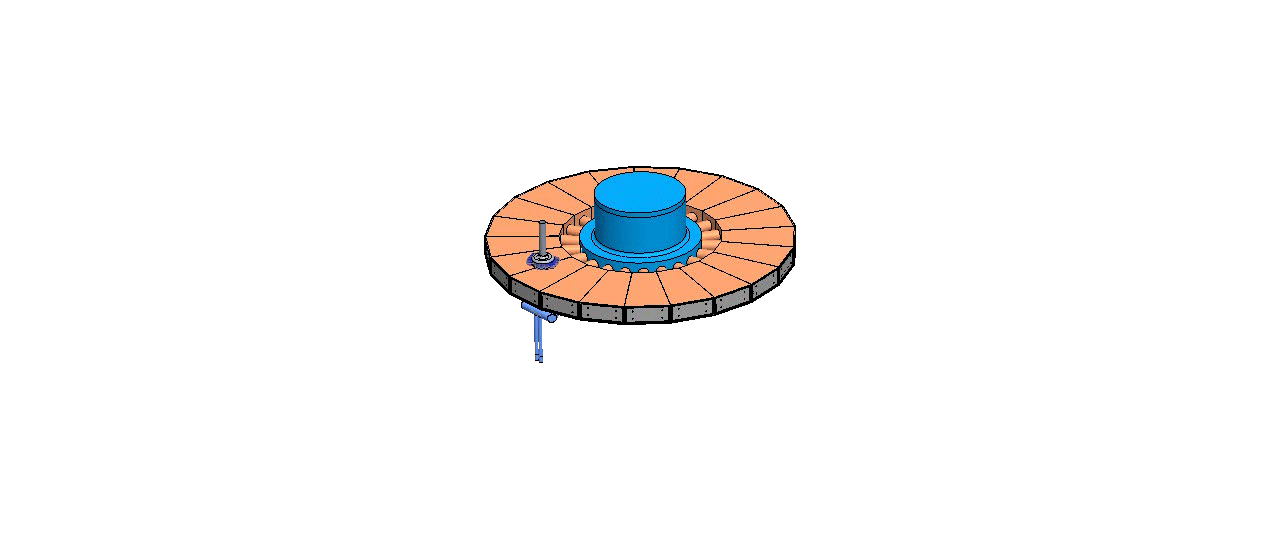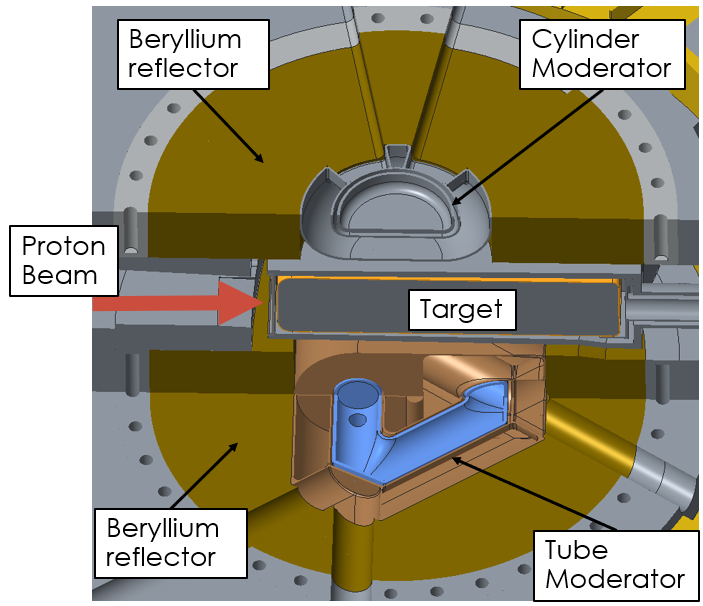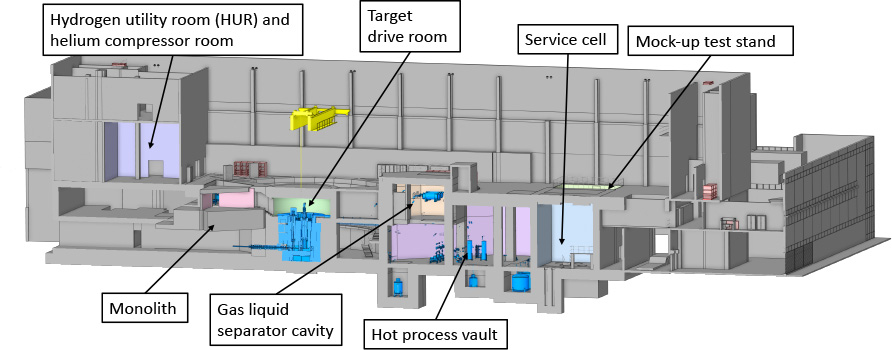Second Target Station Target Systems
A rotating tungsten target

An animation of incoming protons impacting the target and pulses of neutrons exiting toward the instruments. In reality, the spallation process occurs in just a few microseconds.
The Second Target Station’s (STS) Target Systems will encompass all the equipment necessary for converting oncoming pulses of protons into pulses of neutrons that can be used for novel neutron experiments.
A 700-kilowatt proton beam will arrive at a rotating tungsten target in 15 pulses per second. Each proton will have 1.3 gigaelectron-volts of energy, and when a proton pulse encounters the target, approximately 25 neutrons will be knocked away from tungsten atoms, a process called spallation. Some of these neutrons will subsequently travel into beamlines that are connected to neutron scattering instruments.
Animation credit: Andreas Swane/Velded AS
Conditioning and controlling the neutrons

Target and moderator reflector assembly (MRA) arrangement.
The STS target will be sandwiched between a moderator reflector assembly (MRA), made up of an upper cylindrical moderator, a lower tube moderator, and a beryllium reflector surrounding each moderator. This assembly is designed to lower neutron energy levels until they are suitable for research and to maximize the brightness of neutrons traveling toward instrument stations.
The moderators will consist of two circulation loops: one loop containing super-critical liquid hydrogen at 20 Kelvin (-424 degrees Fahrenheit), surrounded by another loop containing water. When the neutrons leave the target, many will interact “inelastically” with the water and hydrogen loops. This means neutrons will lose energy with each collision, slowing them to energies appropriate for neutron scattering. The beryllium reflector will deflect a number of stray neutrons back toward the moderators to increase the number of neutrons useable for experiments.
The target and MRA will be housed within a large structure, called the monolith, which will contain other hardware necessary for Target Systems function. Most parts of the structure will act as shielding to absorb stray neutrons and other forms of radiation produced as protons and neutrons interact with materials.
Some of the other key hardware will function as follows:
- The core vessel will help maintain an inert atmosphere around the Target Systems components, operating with either helium or a rough vacuum within. This is necessary to maintain efficiency and prevent high-energy protons and neutrons from interacting with gases and vapors.
- The proton beam window will provide a barrier between the high-vacuum accelerator atmosphere and the core vessel atmosphere.
- The target assembly will rotate so that each proton pulse impacts a different segment of the target. This will allow the energy from the protons to be spread across a larger volume of the target.
- The target-viewing periscope will provide an optical view of the edge of the target disc, made visible by a luminescent coating. This device will enable a diagnostic measurement of the proton beam profile as it hits the target.
Target Systems hardware within the monolith. The hardware is approximately 7 meters tall and 5 meters in diameter.
Supporting systems
The Target Systems requires various support systems:
- The filter and delay tank cavity, as well as the gas liquid separator cavity, are both part of the water-cooling system. Water loops run through components of the central monolith to remove heat generated by proton and neutron interactions.
- The hydrogen utility room and helium compressor room are part of the cryogenic moderator system, which delivers 20 Kelvin hydrogen to the moderators.
- The service cell handles and processes spent Target Systems components prior to shipment.
- The mock-up test stand allows hardware fit checks and operational preparation for remote-handling maintenance tasks.
Target Systems at the Second Target Station.




